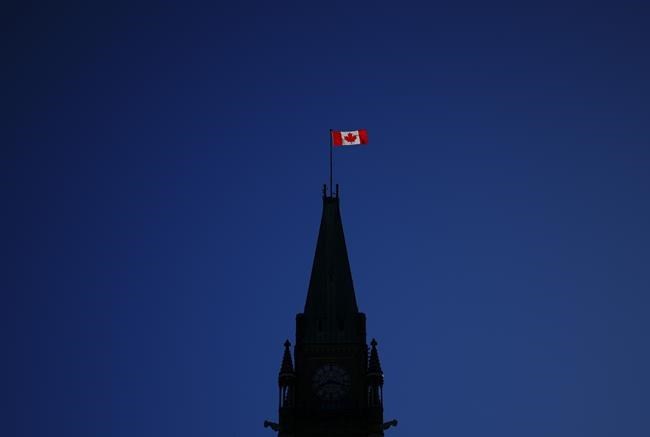OTTAWA — The federal government is providing up to $5 billion in loan guarantees to help Indigenous communities invest in natural resource and energy products.
But when it comes to a promise to close what advocates say is a sprawling Indigenous infrastructure gap, Ottawa is short more than $420 billion.
Teased in last year's fall economic statement, the Indigenous loan guarantee in the 2024 budget allows communities to decide which projects to invest in.
The loans would be guaranteed by the federal government, ensuring Indigenous borrowers can get more favourable interest rates.
First Nations business leaders have long called for an Indigenous loan program to allow for investments in oil and gas projects.
The First Nations Major Projects Coalition anticipates Indigenous participation in the natural resource and energy sector could reach $525 billion in capital investments over the next 10 years.
As much as $50 billion more could be needed for Indigenous equity financing, the coalition projects.
But the federal Indian Act doesn't allow First Nations to put up their land or other assets as collateral, making financing harder to secure.
"If Canada is to make sure that Indigenous communities are able to fully benefit from the opportunities ahead, they need fair access to affordable capital that meets their unique needs," the document says.
Chief Sharleen Gale, the chair of the First Nations Major Projects Coalition, applauded the federal government for finally implementing the program.
"By committing this backstop of financial support to Indigenous equity participation, the government of Canada is taking a significant step towards meaningfully advancing economic reconciliation in this country," Gale said in a press release.
Last year, Ottawa committed to lending affordable capital to Indigenous communities through the Canada Infrastructure Bank to help them purchase equity stakes in infrastructure projects in which the bank is also investing.
But the infrastructure bank is only mandated to invest in projects that advance initiatives like clean power, green infrastructure, broadband technology and transportation.
Lisa Baiton, president of the Canadian Association of Petroleum Producers, said the inclusion of the oil and national gas industry in the program will open new avenues for Indigenous communities to foster economic reconciliation and self-determination.
Enbridge, which has been a vocal supporter of a sector-agnostic program, also celebrated the news.
Similar Indigenous loan guarantee programs already exist in Alberta, Saskatchewan and Ontario, but some stakeholders argued a lack of a federal program resulted in jurisdictional gaps that prohibited economic development.
While Indigenous communities might be seeing gains in investment opportunities, the budget falls well short of closing the infrastructure gap.
Assembly of First Nations national chief Cindy Woodhouse Nepinak, while welcoming the Indigenous loan guarantee and investments in education, income assistance and targeting racism in the health-care system, said the federal government still needs to do better.
A recent Assembly of First Nations report found that $349 billion is needed to close the infrastructure gap by 2030 — a target Ottawa had promised to meet.
"Our people need infrastructure funding to make sure their schools are up to par," Woodhouse Nepinak said in an interview with The Canadian Press.
"And every time we wait for the next federal budget, inflation grows... Anybody else in Canada wouldn't tolerate that, and it's unfortunate we don't see those big investments."
To bring Indigenous infrastructure in line with the rest of the country would require an additional $135 billion for housing, $5 billion for digital connectivity and another $209 billion for other infrastructure, the report found.
Inuit Tapiriit Kanatami, which represents more than 65,000 Inuit in Canada, also called for $75.1 billion over 35 years to support 115 projects and around $790 million annually for operations and maintenance over the next 25 years in its budget proposal to the federal government.
The Métis National Council, which represents Métis in Ontario, Alberta, Saskatchewan and British Columbia, pegs its infrastructure asks at $2.7 billion.
But the budget only allocated $918 million over five years for Indigenous Services Canada and Crown-Indigenous Relations and Northern Affairs Canada to help shrink the gap.
That amount includes $426 million for First Nations on reserve, $370 million for Inuit communities and $60 million for Métis communities.
The previously announced $4 billion over seven years was allocated to implement an urban, rural and northern housing strategy that the government says is currently under co-development with Indigenous partners.
Tuesday's budget also includes $89 million to support increased road access, $175 million for First Nations emergency management and preparedness and $467 million for First Nations and Inuit-led policing.
But the money promised still leaves a more than $420-billion gap that the Assembly of First Nations warned could have dire economic impacts on the communities and people it serves.
"Without these funds, infrastructure that First Nation communities across the country depend on will continue to deteriorate at an alarming pace," its report said.
Akwesasne grand chief and acting Ontario regional chief Abram Benedict, whose jurisdiction needs $25.8 billion for housing, said every day the gap is getting wider.
"The government and the public need to remember this pivotal moment when the price tag inevitably increases," Benedict said in a statement.
"The status quo is not going to stop the gap from getting bigger — decisive and substantial investments will.”
Woodhouse Nepinak said she'll be trying to meet with opposition parties in the coming weeks to make sure they're supporting First Nations, but wouldn't say which ones.
This report by The Canadian Press was first published April 16, 2024.
Alessia Passafiume, The Canadian Press



